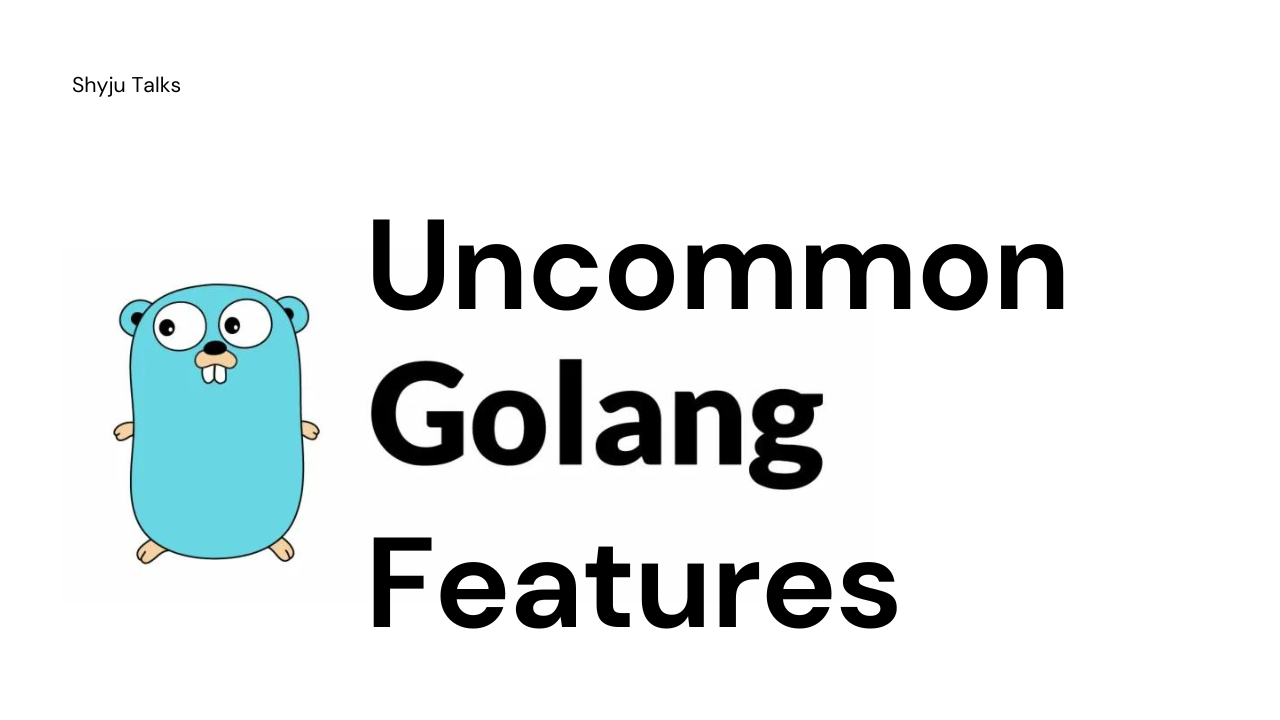When it comes to programming languages, Go (often referred to as Golang) has gained popularity for its simplicity, efficiency, and ease of use. While many developers are familiar with the language’s primary features, there are some hidden gems that often go unnoticed. In this blog post, we’ll explore uncommon Golang features that can enhance your programming experience and make your code more expressive.
1. Multiple Return Values
Go’s support for multiple return values sets it apart from many other programming languages. Functions in Go can return more than one value, which can be a powerful way to simplify code and handle errors more effectively. Embracing this feature can lead to more elegant and robust solutions.
2. Blank Identifier (_)
The blank identifier (_) might seem peculiar at first, but it serves a valuable purpose in Go. It allows you to discard values that you don’t need, particularly when using the range keyword for iterations. This feature can help improve code readability and prevent naming conflicts.
3. Defer Statement
Go’s defer statement is a nifty tool for managing resources and executing clean-up tasks. By deferring a function call, you ensure it runs just before the surrounding function returns. This can be handy for releasing resources, closing files, or logging actions without cluttering the code.
4. Custom Import Alias
Importing packages in Go can sometimes lead to naming conflicts or result in lengthy code. Fortunately, Go allows you to create custom import aliases. This feature provides a clean way to use a different name for an imported package, making your code more concise and easier to maintain.

5. String Conversion Using strconv
Converting data types to and from strings is a common task in programming. Go’s strconv package provides a variety of functions for handling such conversions, ensuring your code remains efficient and concise.
6. Interfaces and Duck Typing
Go embraces interfaces for achieving polymorphism. Unlike traditional object-oriented languages, Go’s interfaces are implicitly satisfied. Any type that implements all the methods of an interface is automatically considered to implement that interface. This simplicity encourages flexible and robust design patterns.
7. Variadic Functions
Variadic functions in Go allow you to accept a variable number of arguments, making your code more versatile and adaptable to different scenarios. The ... syntax enables you to pass an arbitrary number of values of the same type to a function.
8. Go Routines and Channels
Go’s concurrency model based on Goroutines and Channels has gained significant attention over the years. Goroutines are lightweight concurrent functions that enable you to perform multiple tasks simultaneously. Channels, on the other hand, facilitate communication and synchronization between Goroutines, allowing you to write concurrent and efficient code with ease.
9. Function Types and Closures
Go treats functions as first-class citizens. You can assign functions to variables, pass them as arguments to other functions, and even return them from functions. This feature enables the creation of closures, which are functions that can capture and remember their context. Closures prove to be powerful tools for functional programming in Go.
10. Blank Imports for Side Effects
Surprisingly, you can import packages in Go solely for their side effects or initialization. Using the blank identifier _ for the import statement allows you to bypass any compiler complaints about unused imports, making it a useful feature for certain scenarios.
![]()
11. String Switch
In Go, the switch statement is not limited to numeric types. It supports string comparison as well. This can lead to more readable and expressive code when dealing with multiple string cases.
With these lesser-known features at your disposal, you can unlock the full potential of the Go programming language. Whether you’re writing simple scripts or building complex systems, exploring these unique features will undoubtedly enhance your coding journey.
Remember, this blog post only scratches the surface of what Go has to offer. As you continue your Golang exploration, don’t forget to dive into the official documentation and the vibrant Go community to discover even more hidden treasures.
Happy coding!

